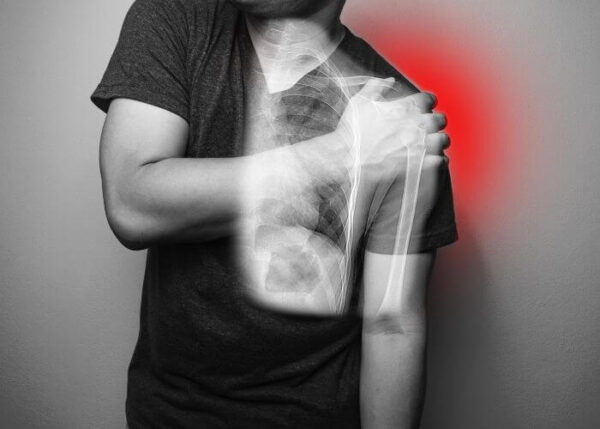Subacromial Decompression Doctor

Do you participate in sports or in work that involves continuous overhead motions, or throwing overhead? If so, you may be at risk of developing subacromial impingement. Subacromial decompression surgeon, Doctor Riley J. Williams provides diagnosis as well as surgical and nonsurgical treatment options for patients in Manhattan, Brooklyn, New York City and surrounding areas who are experiencing subacromial impingement and related shoulder pain. Contact Dr. Williams’ team today!
What is shoulder impingement?
Shoulder impingement is one of the most common causes of shoulder pain. Shoulder impingement caused by compression of the rotator cuff between the acromion (highest portion of the shoulder blade) and humerus (upper arm) during overhead activities. This compression results in propagation of inflammation within the subacromial space. This inflammation causes thickening of the rotator cuff tendons and bursa. The thickening of the rotator cuff tendons, and the thickening of the bursa decreases the space available for tendon movement, thereby causing compression of the tendons and bursae between the bones.

What is a subacromial decompression?
Within the shoulder, there are muscles that allow the shoulder to rotate, tendons that stabilize the shoulder with movement, and fluid-filled sacs (bursa) that help cushion shoulder movement. The muscles of the shoulder travel under the acromion (subacromial), and continue to the humerus (upper arm bone). In patients who perform repetitive overhead activities, the rotator cuff tendons consistently rub against the acromion; this rubbing causes inflammation of the tendons and bursa and decreases the space available for normal shoulder movement. Patients who experience shoulder pain and weakness due to impingement and bursitis may be candidates for a surgical procedure called a subacromial decompression. The goal of this arthroscopic procedure is to create space below the acromion to facilitate normal shoulder motion. Dr. Riley J. Williams, orthopedic shoulder surgeon, treats patients in Manhattan, Brooklyn, New York City, NY and surrounding areas who have suffered from shoulder impingement and are in need of subacromial decompression.
How is subacromial decompression performed?
Dr. Williams uses an arthroscopic approach to this procedure. Arthroscopy utilizes small incisions in the shoulder that allow access to the affected areas. During an arthroscopic subacromial decompression, a small camera (arthroscope) is inserted into the shoulder to visualize the subacromial space. Any irregularities such as tears, bone spurs, inflamed bursa, or irregular tissues are removed using specialized surgical instruments. The removal of pathologic tissue allows the muscles and tendons to heal and reduces the irritation with shoulder movement.
What other procedures can be with a subacromial decompression?
Dr. Williams prefers the arthroscopic method for subacromial decompression because it is minimally invasive. Due to the size of the camera and specialized surgical instruments, the incisions are small and allow for a faster recovery time for the patient. Arthroscopic subacromial decompression also reduces the risk of infection, blood loss, as well as decreased pain and inflammation. Oftentimes the acromioclavicular (AC) joint can be visualized during a subacromial decompression. In patients with arthritis of the AC joint, the distal clavicle can be trimmed to remove the arthritic portions of the AC joint and create space between the collarbone and shoulder blade. This arthroscopic procedure can provide significant pain relief in this area.
What is the recovery period like after subacromial decompression with or without AC resection?
Although the recovery period is variable, most patients can expect to return to daily routine within 2-3 weeks. Sporting activities can resume within 2-4 months following a successful subacromial decompression. In general, patients in New York can expect the following:
- A sling is applied to immobilize the shoulder joint immediately following surgery.
- Active movement of the shoulder and arm begins immediately after surgery.
- Dr. Williams will provide specific shoulder exercises to achieve full range of motion within 2-4 weeks following surgery.
- Formal physical therapy is usually necessary for 2-3 months
For more information on subacromial decompression, or to find a treatment for shoulder impingement, please contact the office of Riley J. Williams, MD, an orthopedic shoulder surgeon serving Manhattan, Brooklyn, New York City, NY and surrounding areas.
